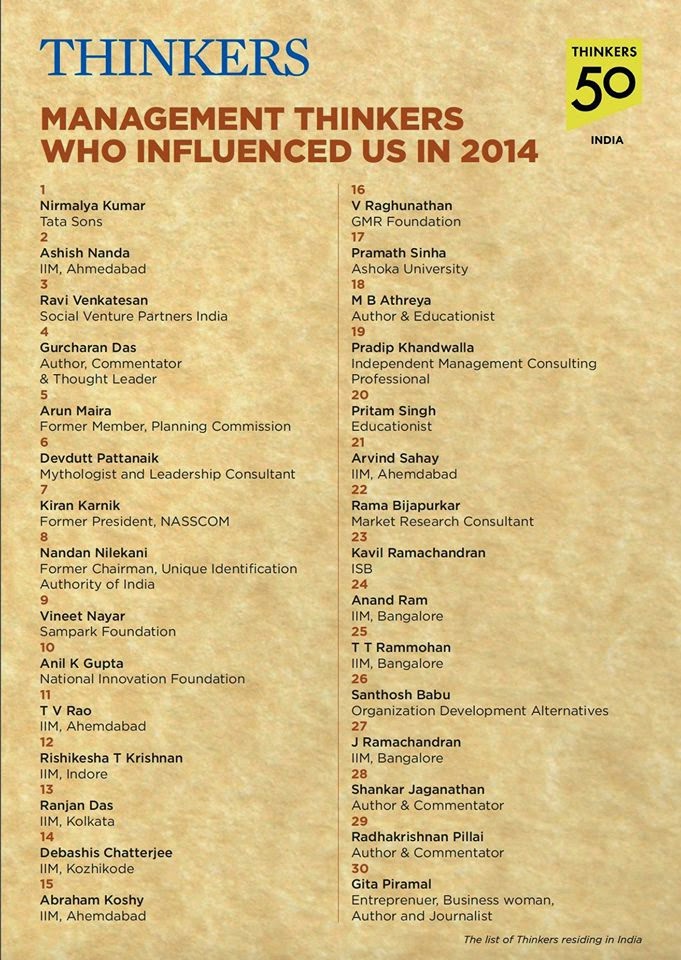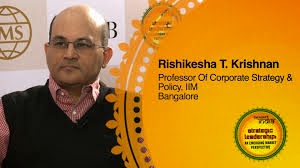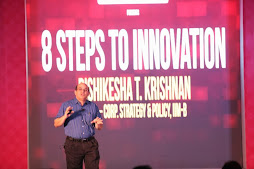Moving to Central India and away from the metros is a major
opportunity for me to learn new things about this country. I hope to chronicle
what I see and experience as I go along.
Indore Management Association Annual Convention
The All India Management Association (AIMA) promotes
professional management across the country through professional events, courses
(they run a well-regarded Advanced Management Programme that at one time was
led by Professor C.K. Prahalad) and certifications. AIMA’s regional chapters
are quite active – last year, the Madras Management Association hosted the
launch of 8 Steps to Innovation in Chennai.
My first exposure to these AIMA chapters was when I was
still a student at IIM Ahmedabad and participated in one of the events of the
Ahmedabad Management Association (AMA). I even contributed an article (on
service quality) to their newsletter. AMA has gone from strength to strength
and now has its own building in Ahmedabad.
But, I was caught by surprise when I attended my first
external event in Indore, the annual convention of the Indore Management Association
(IMA). I started off towards the venue thinking it must be a hotel or an
institutional auditorium – but when I reached, I found it was a huge indoor
stadium (see picture above for a photo of the Abhay Prashal Sports Club, the
venue). The floor of the indoor stadium was filled with business delegates,
while the stands on the sides were largely occupied by students. As I entered,
I found they were all listening in rapt attention to Management Guru Ram
Charan.
Though I have read several of Ram Charan’s books, this was
the first time I heard him speak. He speaks very much in the way he writes –
simple, straightforward and practical. He laces his talk with several examples
(primarily from US companies), many of which come from his advisory experience.
His advice to managers was simple and direct – (1) clarity and specificity; (2)
laser sharp dominant priorities; (3) right people; (4) reviews and dialogue;
and (5) follow through. In my new role, I could see the value of this advice!
I missed the mega event of this year’s IMA convention – the
day prior to the Ram Charan talk featured Amitabh Bachchan. IMA felicitated Mr.
Bachchan with a lifetime achievement award, and his presence ensured wide
publicity of the event in the local press.
The session I chaired followed that of Ram Charan, and had
two interesting speakers. The first was Ms. Preetha Reddy of the Apollo
Hospitals group (she is currently President of AIMA). Ms. Reddy chronicled the
growth of Apollo Hospitals and the role of the entrepreneurial spirit displayed
by her father, Dr. Pratap Reddy. I was impressed by the way Ms. Reddy displayed
statesmanship in giving credit to other players in the healthcare sector like
Fortis and Wockhardt in putting India on the word healthcare map. Not
surprisingly, many of the questions from the audience focused on healthcare
costs, and the affordability of high quality healthcare for the common man. Ms.
Reddy was diplomatic in talking about the government health sector and cited
the examples of the state government insurance initiatives in Karnataka and
Andhra Pradesh as ways in which the government and private health providers
could work together.
I was in for another surprise from the next speaker. The
topic was cybersecurity and I feared that we were in for a drab presentation
full of statistics. But, Mr. Rakshit Tandon proved to be like dynamite. He
didn’t restrict himself to the stage but walked on to the floor of the hall to
engage closely with the delegates. He was particularly adept in engaging with
the student audience, slipping into their lingo and stories they could relate
to. It was a masterful performance and I have no doubt that everyone who
attended his talk will give at least some thought to how they can use the
internet more securely, particularly in the context of banking. (The picture below shows me with Mr. Tandon.)
Local Civic Initiatives
I have had several visitors welcoming me to Indore and
introducing their organizations. Clearly, there are several citizens of Indore
who care deeply for their city and this region. One organization that came to
meet me plans a whole week of in-depth seminars on topics related to the
environment such as clean energy and solid waste disposal in early March, with
each seminar addressed by experts and attended by locally influential persons.
They also publish a magazine in Hindi on environmental issues. Another
organization is working intensively on literacy and school education – clearly
a priority area for this state. I hope to learn more about these organizations
and the work they are doing during my tenure in Indore, and see how these can
be related to the current debates on inclusive innovation.
UWC: A Conglomerate bound by Spiritual Ties
Among my visitors was a young group of entrepreneurs from
the United Works Corporation. UWC is a conglomerate of small companies into
food, wealth management, library furniture, textiles, etc. Each company is run
by a young entrepreneur with a professional interest in that venture. What ties
them together? - a common mentor – Shri Manoj Thakkar who inspires all of them
and provides a spiritual basis for their venture. I found this new
organizational form fascinating, and hope to learn more about it over time.
Indore’s BRTS
India’s cities are getting more crowded and rapid transit
systems are becoming an important priority. Many Indian cities including
Mumbai, Bangalore and Chennai have huge metro rail projects under
implementation. One alternative to the cost and dislocation of metro rail
systems is bus rapid transport. Ahmedabad has a good BRTS system, particularly
on the large ring roads that have been built in the last decade, and Delhi has
experimented with BRTS as well.
The dominant model for BRTS is a dedicated bus lane at the
centre of the road with bus shelters at periodic intervals. Entry from the
shelter to the bus is smooth, as it is on a raised platform and the buses are
specially designed to allow direct entry from the platform into the bus. I was
pleasantly surprised to see that some of Indore’s main roads are broad enough
to accommodate the BRTS. (The only problem I have seen with the dominant BRTS
design is that traveler access to the BRTS lane is sometimes difficult as you
have to cross regular vehicular traffic to reach the BRTS platform at the
centre of the road).
Currently, Indore allows cars to use the BRTS lanes as well,
but I guess that will change once the BRTS bus frequency increases. But, I
found that using the BRTS lane is a mixed blessing – though you move quickly
from one intersection to another, the BRTS lane has a separate traffic signal
and a green light for a shorter time, meaning that you could end up having to
wait for an extra cycle of light changes to cross an intersection. I could see
that this was dissuading cars from using the bus lane, so there may soon be a
natural disinclination to use the BRTS lane!).
All in all, an interesting first few weeks in Indore, and I
look forward to discovering more.
(The views expressed here are the personal views of the
author.)
































